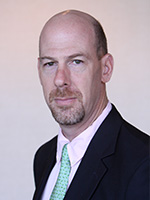
Marc Moss, MD
Historically, burnout has been a problem in health care that most people avoid talking about. Health care professions seemed to be built on learning through sacrifice and working long hours in order to become a better and more compassionate provider. If a few trainees dropped out along the way, they were perceived as being “weak” and not cut out for the profession. Since no one wants to be perceived as “weak,” burnout remained a silent problem. On the rare occasion that providers and trainees did talk about their issues with burnout, these concerns were often dismissed as the “whining of the privileged class.”
There were warning signs; though academic institutions and hospitals were slow and ineffective at addressing them. When one of their residents committed suicide, some programs seems to be almost “embarrassed” by the event, and did not directly address the repercussions of the tragedy. Maybe the academic or hospital leadership was concerned that the event would reflect negatively on their institution. On one of my recent visits to another academic institution, one house officer told me that the suicide of one of their fellow residents was announced at the beginning of morning report without any debriefing, discussion, or being made aware of what resources were available to help them deal with the catastrophe.
The reality is this “silent” epidemic is about more than burnout. Health care professionals are suffering from symptoms of depression, anxiety, posttraumatic stress disorder, and other forms of psychological distress. Recent changes in the delivery of health care have exacerbated the problem. The routine demands on providers seem to be intensifying: increased time spent on documentation, increased focus on productivity by hospital administrators and academic departments, increased patient volumes, sicker patients, lower perceived control, discordance between individual and organizational values, unsupportive work environments, and a feeling of isolation. Collectively, these demands culminate in a loss of meaning at work.
There are several reasons why burnout is finally getting the attention it deserves. Burnout is now understood to be very common. More than 50 percent of doctors in certain specialties have symptoms of burnout, and critical care providers are near the top of that list. Burnout is also associated with worse patient outcomes, such as decreased quality of care, lower patient satisfaction, increased number of medical errors, and higher 30-day mortality rates. The high rates of job turnover from burnout are also associated with substantial financial costs to health care systems. Furthermore, health care leaders realized they employ a lot of people, and the health of these health care professionals is important and costly.
Several major organizations are now focusing attention on burnout in health care professionals. The National Academy of Medicine created an Action Collaborative on Clinician Well-Being and Resilience. They are confident that this initiative will be at least as impactful as their medical error “To Err Is Human” campaign. The leadership of the Critical Care Societies Collaborative (CCSC) developed a call to action that was published simultaneously in four major critical care journals including the American Journal of Respiratory and Critical Care Medicine. In December, the CCSC also held a national summit to identify how professional societies can start to address burnout in their members. The American Medical Association, the Blue Ridge Academic Health Group, the Institute for Healthcare Improvement, and other major organizations have all published position papers on health care professional wellbeing in an attempt to re-create joy for health care professionals.
How ATS Will Address the Issue of Burnout
At ATS 2018 San Diego, Dr. Darrel Kirch, the CEO of the American Association of Medical Colleges, will present at the Opening Ceremony and discuss burnout. One of the leading burnout researchers, Chief Wellness Officer at Stanford Dr. Tait Shanafelt will give one of the Monday Keynote lectures. The topic: burnout, as well as health care professional wellbeing. On Wednesday morning, there will be a scientific symposium, “Battling Burnout: Overcoming the Biggest Threat to Health Care Quality and Safety.” In the Exhibit Hall, there will also be a Joy in Medicine exhibit booth to raise awareness on burnout and disseminate information on strategies to help prevent and treat its symptoms and consequences.
Recently, the ATS created a Burnout Action Planning Committee. Led by Drs. Tina Shah and Seppo Rinne, this committee developed a strategic plan to address burnout for the greater pulmonary, critical care, and sleep community. In addition, this group identified important first steps to address the burnout epidemic for our members. We are now working to enhance health care professional wellbeing with the ultimate vision to help combat the burnout syndrome epidemic , and other forms of psychological distress. Collectively, members can assist academic medical centers, hospitals, and other care environments to transform their culture, create a healthy working environment, and reverse the alarming trends in clinician burnout. By making care of the caregiver a priority, we will also be serving our patients.

